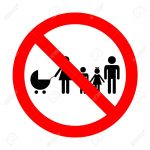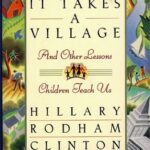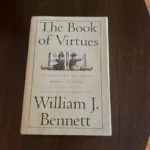The Assault on the Family
I am beginning to suspect a conspiracy. A conspiracy of silence, of cover-ups, of misleading information. A conspiracy of what? – ASIO nefariousness? American imperialism? No, something that is more important, something that affects every one of us: a conspiracy against the traditional family.
Are all forms of living arrangements of equal value? Do all family structures offer similar environments for a child’s development? Yes, according to the media. Stories regularly appear about how the traditional family no longer exists, and that even if it did, it is no longer necessary for a child’s well-being.
As but one example, the Melbourne Age’s weekly women’s section often features articles on family issues. Appealing to feminists, it tends to downplay or ignore evidence which would argue for the traditional family. On the 24th of March it ran an article on child-care. The whole tone of the article was that day care is fine for kids, and mothers should feel no compunction in abandoning kids for careers. Only one sentence was devoted to someone (Jay Belsky) who questioned the impact of day care on kids, while 11 paragraphs were devoted to rebutting his findings.
Not only the media, but other groups which should know better are also pushing anti-traditional family lines. A few examples:
The United Nations has declared 1994 to be The International Year of the Family. Let me read to you a few lines from the official UN guide-lines for the International Year of the Family:
“The family constitutes the basic unit of society and therefore warrants special attention.” So far so good. But let me read on. “Families assume diverse forms and functions from one country to another, and within each national society…Consequently, the International Year of the Family encompasses and addresses the needs of all families.” The document continues, “Changes in social structures…have meant that there are many different types of family structure, with different strengths and weakness.” This means that “any image of what constitutes the ‘ideal family’ will differ greatly. Policies affecting the family should seek to avoid promoting, implicitly or explicitly, a single, ideal image of the family.”
This sentiment was echoed recently by Don Edgar, director of the Australian Institute of Family Studies. At a Family Summit held in Canberra last November, Edgar said, “There is no optimal form of family life,” and he referred to his own broken family background as proof of this.
And finally, in an inch-thick Liberal Party Fightback! policy manual entitled “The Provision of Family Services” which was released just before the election, we read these words: “different views about family are worthy of consideration . . . it no longer makes sense to speak about ‘the family’ but about families’ . . . In this context, it may be easier to say what is not a family than what is a family” Thus even a political party known as a conservative party refuses to spell out clearly what it means by “family”.
Unlike these three remarks, the Australian Family Association thinks that it is not only possible to define what a family is, but it also believes it can suggest why the family thus defined is preferable to other household relationships. Indeed, there is a mountain of evidence available which suggests that there is a strong case for the two-parent family.
But unfortunately, this evidence is not getting out. Is it deliberately being covered up? One can only speculate. But there does seem to be a conspiracy of silence concerning the ever-growing body of evidence which supports the two-parent family.
Armand Nicholi, a clinical professor of psychiatry at Harvard medical school, has studied the literature and research on the question of parental absence and children’s well-being. The literature spans over 40 years of research and study. His conclusion: “What has been shown over and over again to contribute most to the emotional development of the child is a close, warm, sustained and continuous relationship with both parents.” [Emphasis in original.]
Nicholi goes on to make this observation: “One other comment about this research. In addition to the magnitude of it, the studies taken as a whole paint an unmistakably clear picture of the adverse effects of parental absence. Yet this vast body of research is almost totally ignored by our society. Why have even the professionals tended to ignore this research? Perhaps the answer is, to put it most simply, because the findings are unacceptable.
“Attitudes which now prevail toward parental absence resemble those once prevalent toward cigarette smoking. For decades Americans ignored the large body of research concerning the adverse effects of cigarette smoke. We had excellent studies for decades before we began to respond to the data. Apparently as a society, we refuse to accept data that demands a radical change in our lifestyle.”
Lifestyle change indeed! All the bunk we’ve been hearing for the last three decades would need to be reexamined. The philosophy of the sexual revolution, for example, would need to be seriously challenged. And the powerful gay and feminist lobbies would also find themselves no longer getting a free ride by the media and politicians if this evidence was more widely known.
Why Children Need a Mum and a Dad
The evidence available is so extensive that it cannot here be covered. A lengthy summary of the findings can be found in the latest edition of The Australian Family, the quarterly journal of the Australian Family Association. Here is just one small portion of that summary. Other areas, like educational performance, and emotional, mental and physical well-being, could also be examined. But this gives an indication of the kind of studies which have been undertaken (and under-reported).
A number of studies have found a very real connection between delinquent and/or criminal behaviour, and broken families. Studies include those of Rickel and Langner 1985, and Peterson and Zill 1986.
A study of 522 teenage girls, for example, (Kalter, et al. 1985) found that girls in divorced families committed more delinquent acts (e.g., drug use, larceny, skipping school) than their counterparts in intact families. Dornbusch et al., (1985) examined a representative national sample of male and female youth aged 12-17 and found that adolescents in mother-only households were more likely to engage in deviant acts.
Drug usage is also higher among those who come from broken homes. Mott and Haurin 1987, and Matsueda and Heimer 1987, for example, found that offspring from non-intact families are more likely to engage in drug and alcohol use than offspring from two-parent families.
Fathers, it seems, play a particularly important role in prevention of drug use. A 1987 UCLA study pointed out that “inadequate family structure” makes children more susceptible to drug use “as a coping mechanism to relieve depression and anxiety.” Another UCLA study (1988) concluded that, although “mothers are more active than fathers in helping youngsters with personal problems…with regard to youthful drug users, [the] father’s involvement is more important.” Among the homes with strict fathers, only 18 per cent used alcohol or drugs at all. In contrast, among mother-dominated homes, 35 per cent had children who used drugs frequently.
Other examples of criminal activity and broken families can be mentioned. A study of street-gangs reveals this linkage as well. In a recent book on the subject, Francis Ianni found that most gang members in America come from female-headed households. And a study of British communities in the 1987 American Journal of Sociology by Robert Sampson and W. B. Groves found a direct statistical link between single parenthood and virtually every major type of crime, including mugging, violence against strangers, car theft and burglary.
Indeed, the very absence of intact families makes gang membership appealing. As Dan Quayle remarked in his address on family breakdown (reprinted in the June 1992 AFA Journal), the gang members he visited all viewed the gang as a kind of surrogate family. Many gang members said “It was like having a family”. “‘Like family’ – unfortunately, that says it all,” said Quayle.
A 1985 study reported in Psychology Today found that “90 per cent of repeat adolescent firestarters live in a mother-only constellation”. A 1987 Michigan State University study of 72 adolescent murderers discovered that 75 per cent of them had divorced or never-married parents. And a 1987 study by Raymond Knight and Robert Prentky of 108 violent rapists, all repeat offenders, found that 60 per cent came from single-parent homes.
Or consider a study which tracked every child born on the Hawaiian island of Kauai in 1955 for 30 years. It found that five out of six delinquents with an adult criminal record came from families where a parent – almost always the father – was absent.
An American author, reviewing the evidence, reports the following: “Poverty alone does not explain all of these effects. Indeed, poverty may not explain any of them”. He cites a 1988 study by Douglas Smith and G. R. Jarjoura which analysed victimisation data on over 11,000 individuals from three urban areas in New York, Florida and Missouri. They arrived at this startling conclusion: the proportion of single-parent households in a community predicts its rates of violent crime and burglary, but the community’s poverty level does not. Neither poverty nor race seem to account very much for the crime rate, compared to the proportion of single parent families, Smith and Jarjoura found.
Even researchers who are wary of making a connection between broken families and crime have conceded that some relationship exists between the two. For example, David Demo and Alan Acock, who reviewed dozens of studies on the subject in 1988 concluded: “A tentative conclusion based on the evidence reviewed here is that antisocial behaviour is less likely to occur in families where two adults are present, whether as biological parents, step-parents, or some combination of biological parents and other adults”.
As this very limited set of studies indicates, there is evidence to show that not all forms of family life are of equal value. Some forms of family life have very real negative consequences. Now, to highlight the importance of the two-parent family is not to denigrate those who find themselves – often through no fault of their own – in the position of being single-parents. Because of the death or desertion of a spouse, for example, many single-parents find themselves valiantly seeking to raise their children as best they can. We can only support and encourage such single-parents in every possible manner.
But it is to say that those who deliberately choose to have children without a spouse are doing so at great risk to both themselves and their children. The Murphy Brown syndrome, in other words, is what is here being challenged.
Nor does this imply that two-parent families are always without vice and single-parent families are always without virtue. One can always find exceptions where single-parent families out-perform two-parent families. One can always find a very happy single-parent family and a very unhappy two-parent family.
But what is being claimed is that certain forms of the family (namely the intact two-parent family) are to be preferred for a number of reasons. Why the available evidence seems to be not widely known can only be guessed at. But my suspicion is that there are groups who for various reasons do not want this information to be known. Call it a conspiracy, or a cover-up, or what have you, but surely the information has been suppressed.
Since the 60’s, the West has been taken for a con job. We have been lied to about a number of cultural issues, be it sex, marriage, the family, or children. The time has come for those who support the family to begin to regain some of the intellectual territory currently held by those hostile to the family. The evidence is available, if people but take the time to familiarise themselves with it.
The reckless comments about the family that are heard almost daily need to be challenged. Comments from a recent Melbourne Age editorial, opining that “There is no reason for believing any type of relationship is objectively better or worse than any other, and there is no good reason for discriminating in favour of, or against, any type of relationship,” for example, need to be challenged. Such nonsense must be resisted and resisted vigorously.
[2049 words]



















